

How to know a supertot when you see one
| |
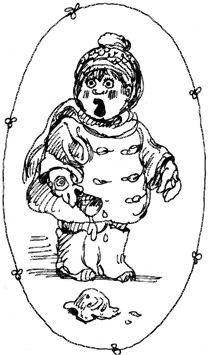 |
|
A supertot is one to three
years old. |
|
| |
A supertot likes him- or herself. |
|
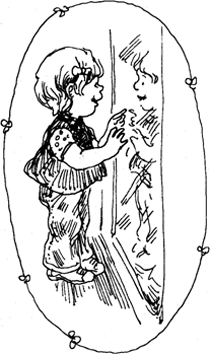 |
|
| |
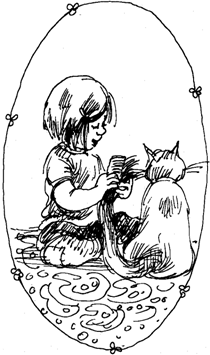 |
|
A supertot is curious. |
|
| |
A supertot is creative. |
|
|
|
| |
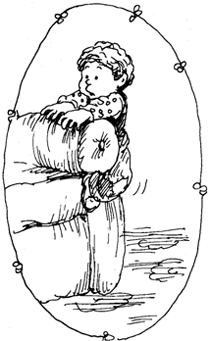 |
|
A supertot is active. |
|
| |
A supertot loves to learn. |
|
|
|
Watching supertots grow
You may already have a supertot and not know it. If your one- to three year-old is normally curious and active, you probably do, but I hate that word "normal"; it connotes the perfect child, an impossible and therefore misleading image. Your child was born with a potential for learning that if fulfilled will be a source of enormous personal satisfaction. A supertot feels good about him- or herself and is able to develop his or her potential. Sounds simple, but it's not; for one reason or another, many young children do not have the opportunity in their first, formative years to be supertots.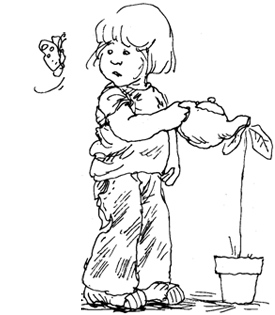
In the time from twelve to thirty-six months supertots change dramatically in the way they can use their fingers, arms, legs, mind, emotions, and powers of communication. They change along amazingly predictable lines, sharing a loose, natural, inner timetable with other children their own age. Parents often feel better when they see the timetable written down in front of them; it helps them recognize and welcome their child's accomplishments when they occur. It also helps them be alert to new developments.
But if parents find that their child doesn't fit anyone description snugly, they shouldn't worry (unless there are clear indications of developmental difficulties, in which case, parents should bring these problems to the attention of the child's pediatrician). The important thing to keep in mind is that each child moves along at his or her own speed. It does no good to push or pull, so relax; enjoy your child's developments as they unfold, and before you know it, your child will have grown up.
| |
|
|
12-13 months
At this age, most children like to creep, crawl, or walk about, sit on the floor and pivot around while playing with toys, hold and let go of small objects, put things in their mouths, use their fingers, say two or three words, put two different syllables together (ba-da), and be hugged. |
|
| |
|
|
|
|
| |
|
|
14-15 months
At this age, most children like to stand up and sit down, practice walking, drop toys from their highchairs to get attention, look for hidden toys, play Peek-a-Boo and Arms Up/Arms Down with you, try to pull off their socks, feed themselves with their fingers, say four or five words, and understand other words.
|
|
| |
|
|
|
|
| |
|
|
16-17 months
At this age, most children like to crawl upstairs and down, throw objects, squat down and pick things up, walk around carrying things, play with sand and water, roughhouse with you, fill up and empty containers, stack two or three blocks, try feeding themselves with a spoon, drink from a training cup, respond to your words, point to show you what they want, wave bye-bye, say five to seven words, and under standmore. |
|
| |
|
|
|
|
| |
|
|
18-20 months
At this age, most children like to run (though awkwardly), pull and push things around, throw things, walk upstairs, "dance" to music, fetch things and carry them to you, make a tower of three or four blocks and knock it over, try to turn the pages of a book, take things apart, insist on feeding themselves, point to and name parts of the body, hum and sing, use a vocabulary of ten to twelve words, use words to tell you what they want (Gimme dat, Need dat, Mine), say their favorite word (No), cuddle a teddy bear, and get their own way. |
|
| |
|
|
|
|
| |
|
|
21-23 months
At this age, most children like to walk upstairs, kick a ball, climb up onto and down from chairs, sort objects and shapes, color with crayons, fit things together, peel a banana, point to things and ask, "Whazzat?" say short sentences, and use a vocabulary of about twenty words.
|
|
| |
|
|
|
|
| |
|
|
24-26 months
At this age, most children like to run around, walk backwards, make nonpedaling riding toys go fast, do very simple puzzles, put pegs in a peg board, hammer pegs, play with dolls, take off their shoes, imitate the way adults talk and act, follow simple commands (Please bring me the doll), talk about themselves in the third person (Dougie go out), use more words and longer sentences.
|
|
| |
|
|
|
|
| |
|
|
27-29 months
At this age, most children like to jump, turn door knobs, imitate the play of older children, draw with crayons, unscrew nuts from bolts, unbutton large buttons, eat well with a fork, listen to sounds and guess what made them, and under stand up to three hundred words. |
|
| |
|
|
|
|
| |
|
|
30-35 months
At this age, most children like to walk up and down stairs easily, climb things and jump off, walk on a balance board, match objects of a similar color, try to hold a crayon properly, wash and dry their hands, avoid known hazards (the street, matches), try to dress themselves, sing the words of several songs, learn rhyming jingles, understand a vocabulary of up to 450 words, count to 10 or 20 as a chant (without knowing what the numbers mean or how they are used), talk with you, and carry out established routines. |
|
| |
|
|
|
|
| |
|
|
36 months
At this age, most children like to ride a tricycle, climb a jungle gym, string beads, build a bridge from blocks, take turns with other children as long as their turn comes often enough, feed themselves neatly, understand explanations, tell their names and addresses, play baby sometimes, imitate grownups, and carry on extended conversations with you. |
|
CLICK HERE for Chapter Two: Supertots and Language |

